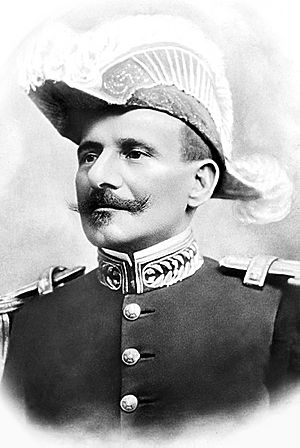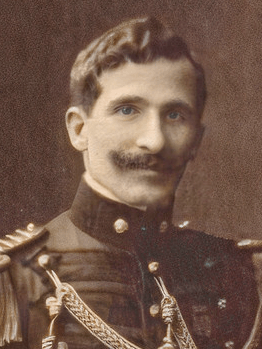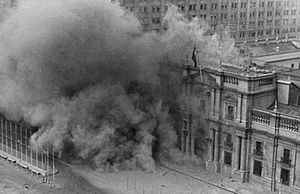Hermes da Fonseca facts for kids
Quick facts for kids
His Excellency Marshal
Hermes da Fonseca
|
|
|---|---|

Official portrait, 1910
|
|
| President of Brazil | |
| In office 15 November 1910 – 14 November 1914 |
|
| Vice President | Venceslau Brás |
| Preceded by | Nilo Peçanha |
| Succeeded by | Venceslau Brás |
| Justice of the Superior Military Court | |
| In office 18 December 1908 – 27 May 1909 |
|
| Nominated by | Afonso Pena |
| Preceded by | Alexandrino Faria de Alencar |
| Succeeded by | José Maria Marinho da Silva |
| Minister of War | |
| In office 15 November 1906 – 27 May 1909 |
|
| President | Afonso Pena |
| Preceded by | Francisco Argolo |
| Succeeded by | Luís Mendes de Morais |
| Personal details | |
| Born | 12 May 1855 São Gabriel, Rio Grande do Sul, Empire of Brazil |
| Died | 9 September 1923 (aged 68) Petrópolis, Rio de Janeiro, Brazil |
| Political party | PRC |
| Spouses |
Orsina Francioni
(m. 1878; died 1912)Nair de Tefé
(m. 1913) |
| Relations | Deodoro da Fonseca (uncle) |
| Children | 5 |
| Signature | |
| Military service | |
| Allegiance | |
| Branch/service | |
| Years of service | 1871–1906 |
| Rank | Field Marshal |
| Commands |
List
|
| Battles/wars |
|
Hermes Rodrigues da Fonseca (Portuguese pronunciation: [ˈɛʁmis ʁoˈdɾigis dɐ fõˈsekɐ]; 12 May 1855 – 9 September 1923) was a Brazilian field marshal and politician. He served as the eighth President of Brazil from 1910 to 1914. He was the nephew of Deodoro da Fonseca, who was Brazil's first president.
Biography
Early Life and Military Training
Hermes da Fonseca was born in 1855 in São Gabriel, a town in Rio Grande do Sul. His father was a military officer. When his father was sent to the Paraguayan War, his family moved back to Rio de Janeiro.
In 1871, at age 16, Hermes joined the Military School of Praia Vermelha. There, he was taught by Benjamin Constant, who introduced new ideas called positivism to Brazil. After graduating, Fonseca worked as an assistant to Prince Gaston of Orléans.
Rising Through the Ranks
Fonseca supported the proclamation of the Republic by his uncle, Manuel Deodoro da Fonseca. After his uncle took power, Hermes quickly rose in military rank. In just ten months, he went from captain to lieutenant colonel.
He played an important role during the 1893 Naval Rebellion, defending the government in Niterói. By 1894, he was promoted to colonel. He later commanded the Federal Capital Police Brigade, which is now the Military Police of Rio de Janeiro state. From 1899 to 1904, he led the Realengo Military School, which trained army officers.
In 1904, as commander of the Realengo Preparatory School, he helped stop the Vaccine Revolt. This was a protest against mandatory smallpox vaccination in Rio de Janeiro. It also showed how unhappy many people were with the government. Later, President Rodrigues Alves promoted him to marshal.
Minister of War
Hermes da Fonseca held several government jobs. He became the Minister of War under President Afonso Pena from 1906 to 1909. During this time, he made important changes to the Army. He sent Brazilian officers to Germany for training. These officers later became known as the "Young Turks."
He also reorganized the Army and the Ministry of War. He created larger military units and improved technical services. One of his most important changes was starting compulsory military service in 1908. However, this law was only fully put into practice in 1916.
The 1910 Election
In 1908, after a trip to Germany, Hermes da Fonseca was nominated to become president. He had the support of President Nilo Peçanha and many state representatives. However, the states of São Paulo and Bahia supported Senator Ruy Barbosa. This led to the "Civilist Campaign," which was the first time in Brazil's republican history that a real election campaign took place.
Hermes da Fonseca won the 1910 election against Ruy Barbosa. He received 403,867 votes, while Ruy Barbosa received 222,822 votes. Some historians say there were issues with the election results. After being elected, Fonseca traveled to Europe. He was there when the monarchy in Portugal fell in 1910.
President of Brazil (1910–1914)
Challenges During Presidency
Soon after becoming president in November 1910, Hermes da Fonseca faced the Revolt of the Lash. This was a mutiny by sailors on several battleships. They were protesting against harsh punishments, like whipping, in the Navy. The revolt was led by João Cândido Felisberto. The government agreed to stop the lash punishments and offered amnesty to the sailors. However, the government later went back on its word. Many sailors were expelled, arrested, or killed. This event greatly damaged Hermes's public image.
Two years later, another conflict began, known as the Contestado War. This was a social and religious conflict in southern Brazil. It was not fully resolved until after his presidency ended.
Salvation Policy
During his time as president, Hermes da Fonseca carried out the "Salvation Policy." This policy aimed to reduce corruption and change state governments that opposed him. He used political actions or military force to intervene in several states, including São Paulo, Rio Grande do Sul, and Bahia. The goal was to appoint new leaders who would support his government. This was a centralizing policy, meaning it aimed to give more power to the federal government.
While successful in some states, the Salvation Policy also caused strong opposition. In Ceará, local politicians and the popular Catholic priest Cícero Romão fought against government intervention. This conflict became known as the Juazeiro Sedition.
Economy and Foreign Policy
In 1914, Brazil's financial situation was difficult. Hermes da Fonseca's government had to renegotiate Brazil's foreign debt. This was done through a second funding loan.
In foreign policy, Brazil continued to strengthen its ties with the United States. This approach was started by the foreign minister, the Baron of Rio Branco, who remained in his position until his death in 1912.
Internal Improvements
His government continued building railways, including the Madeira-Mamoré Railroad. They also built technical and professional schools. The University of Paraná was created during his term. Fonseca completed renovations at the Vila Militar de Deodoro and the Central Hospital of the Army. He also oversaw the construction of workers' villages in Rio de Janeiro, in areas like Marechal Hermes and Gávea.
In 1912, President Hermes supported the Fourth Brazilian Workers Congress in Rio de Janeiro. This was unusual because governments at the time often tried to stop union movements. His son, Mário Hermes, helped organize the congress.
Personal Life and Presidential Traditions
Hermes da Fonseca was the only Brazilian president to marry while in office. His first wife, Orsina Francioni da Fonseca, died in 1912. In 1913, he married Nair de Tefé von Hoonholtz, who was a caricaturist and later seen as a feminist. Their wedding took place at the Rio Negro Palace in Petrópolis.
During his government, a decree was issued that made the presidential sash an official symbol. Hermes da Fonseca was the first president to wear it and pass it on to his successor. Since then, all Brazilian presidents have received the sash when they take office.
Hermes da Fonseca was one of only three military officers to become President of Brazil through direct elections. The others were Eurico Gaspar Dutra and Jair Bolsonaro. Throughout his presidency, he often wore his military uniform, even during meetings with his ministers.
Later Years
After leaving the presidency in November 1914, Hermes da Fonseca ran for the Senate for Rio Grande do Sul. However, he refused to take his seat after the murder of Pinheiro Machado in 1915. He then traveled to Europe and stayed away from politics for six years, living in Switzerland.
He returned to Brazil in 1920. In 1921, he became president of the Military Club. He became involved in the failed military revolt of 1922, known as the Copacabana Fort revolt.
During the 1922 presidential election, false letters were spread that criticized Hermes da Fonseca. These letters were said to be from Artur Bernardes, causing much trouble in the election.
President Epitácio Pessoa ordered Fonseca's arrest in July 1922. He was accused of being part of the revolt. He spent six months in prison before being released in January 1923. He was sick and retired to Petrópolis, where he stayed with his wife's family. He died there on 9 September 1923 and was buried in the city's cemetery.
Images for kids
See also
 In Spanish: Hermes Rodrigues da Fonseca para niños
In Spanish: Hermes Rodrigues da Fonseca para niños





